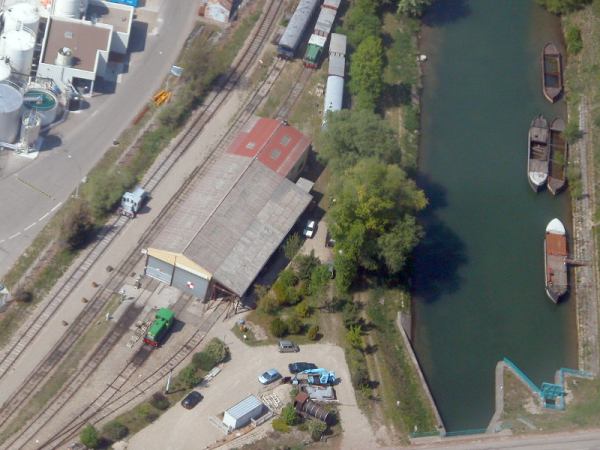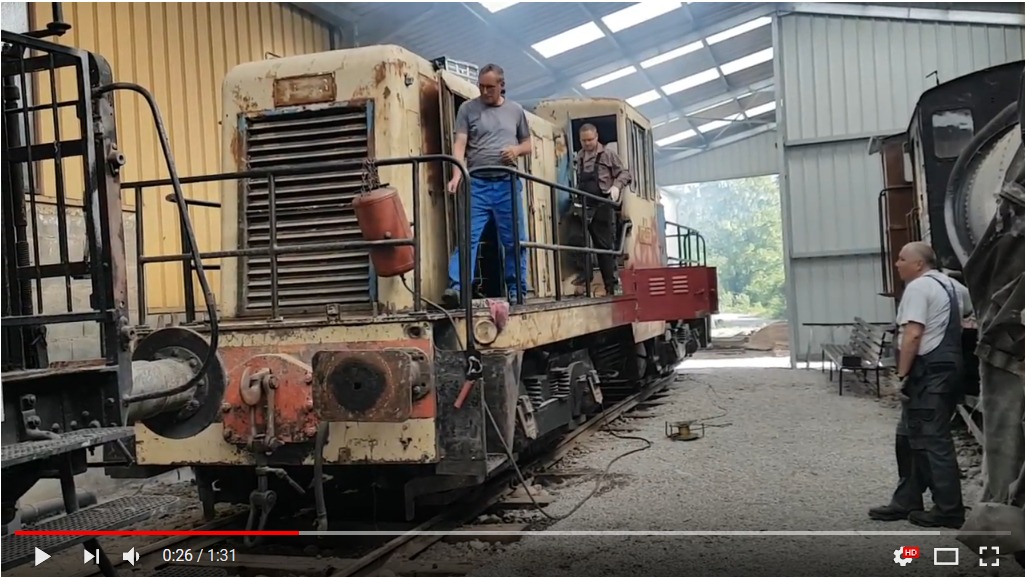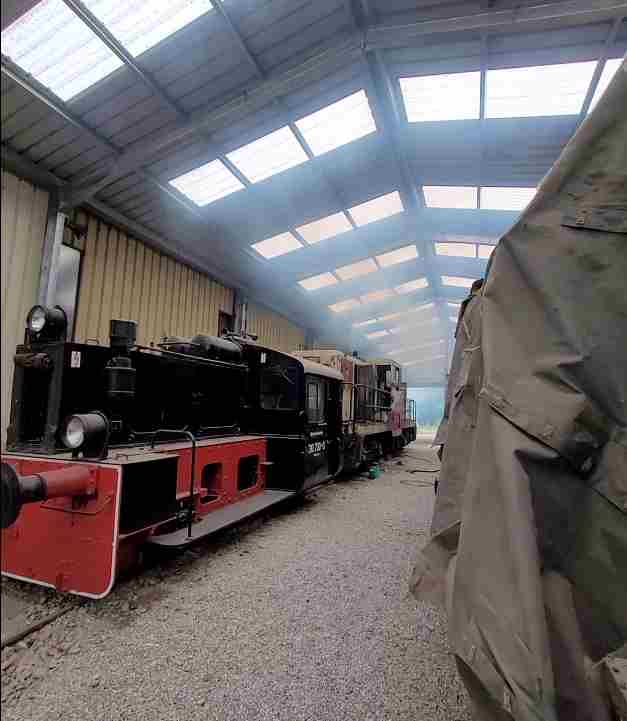General
characteristics of the switcher:
| Builder: |
General Electric
Compagny, Schenectady, New York (siège)
Ateliers: Erie, Pennsylvanie |
| Model/Type: |
GE 75tons/ Serial
Number GE: 27536 |
| Date of delivery: |
1944 |
| Road number: |
GE4036 |
| Diesel power [kW]: |
Original: 2 * 186
Current: 2 * 211 |
| Locomotive power
[kW]: |
Original: 262 at
42km/h |
| Maximum starting
tractive effort [kN]: |
200 |
| Maximum safe
speed
[km/h]: |
50 |
| Weight in working
order [t]: |
67,5 |
| Total length [m]: |
12,09 |
| on board voltage
[V]: |
72 |
General
characteristics
of the 2 prime movers:
| Builder: |
Baudouin Moteurs,
Marseille |
| Model/Type: |
DNP V type 922 |
| Cycle: |
4 stroke |
| Air supply: |
Naturally
aspirated |
| Max. Power output
[kW] at rpm: |
211 @ 1800 |
| Specific fuel
consumption
[g/kWh]: |
237 |
| Fuel consumption
at max. power output [l/h] |
67 |
| Maximum torque
[Nm]: |
1120 |
| Break mean
effective pressure [bar]: |
6,6 |
| Piston speed [m/s]: |
9 |
| Number of
cylinders [-]: |
V8 at 90
degrees |
| Bore * Stroke [mm]: |
150*150 |
| Displacement one
cylindre
/ total [l]: |
2,65 / 21,2 |
| Weight [kg]: |
? |
| Cooling: |
eau |
| Cranking: |
Electric using
the generator |
| Injection system: |
1 unique pump
Sigma + 1
injector Bosch per cylinder |
Diesel prime
mover builder plate:
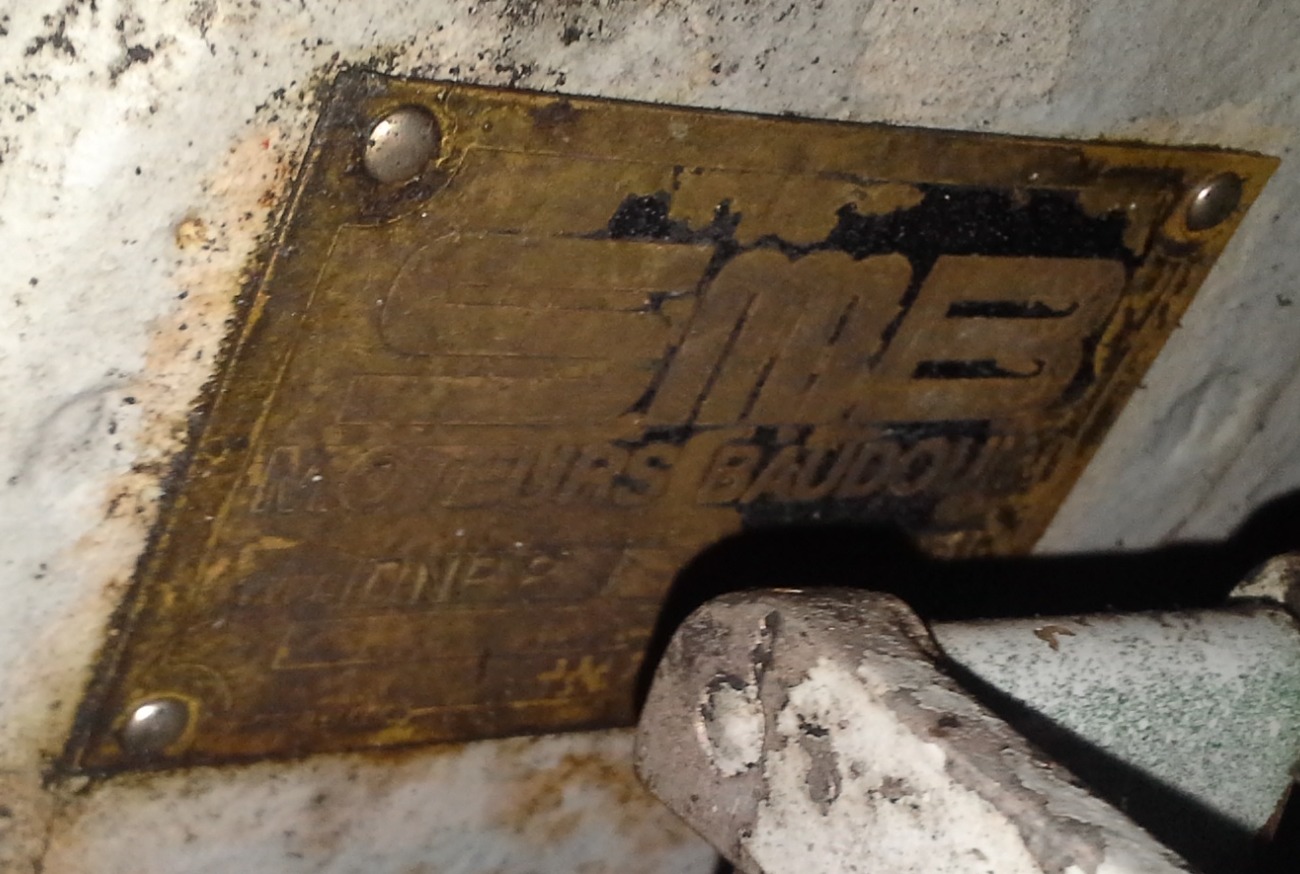
General view:

Builder plate:

Short
presentation:
This
locomotive GE 4036 is one of the 10 copies of type GE75tons
which were ordered in 1944 by the US Army Transportation Corps for
troop transport during WW2.
They
were equipped with two identical power generators that produce
direct current. Originally each power generator consisted of a Cummins
in line 6 cylinder diesel engine type L1 600, with natural aspiration,
38 liters displacement (Bore: 178mm, Stroke: 254mm) which was able of
186kW at 1000rpm and a generator of type GE 549-F1. This one was able
to deliver a maximum current of 800A or a maximum voltage of 500V (of
course not simultaneously).
After
that (and this is the case for the 4036),
the Cummins engines have been replaced by Baudouin V8 diesel
engines of type DP8 with 21,2 liters
displacement (bore=stroke=150mm) with natural aspiration which
developed each 211kW at 1800
rpm (or 176kW at 1500 rpm). Because changing the generators
would have been by far too expensive, a gear reducer has been added.
Each
power generator provides electric current for the both
nose-suspended traction motors of the nearest bogie. These
electric motors are of type GHM833-L1 and connected in series or
parallel.
To
start the diesel engines, the power
generators are fed by the 6 classical lead acid batteries which are
connected in series.
Each power generator is equiped with an auxiliary generator of type
GY-10A1 which can charge the batteries and feed the excitation winding
of the generator. For each power generator, there is one air compressor.
The
benefit of having two complete independent power generators is evident:
it is very unlikely that both will faile at the same time and the
locomotive has a greater availability and reliability, even if the
locomotive has only the half of the nominal power. Perhaps only one
regret: in the case of a failure on one power generator, the 4 electric
motors are not fed but only 2. The advantage would have been that the
speed tractive effort curve would have stayed the same, only the speed
would have been divided by two. With only 2 traction motors used, the
maximum starting tractive effort is only the half of the original
value.
This
machine has been operated by the "Chemin
de Fer de Blaise et Der" (CFBD) in regular freight use until
2011. At this time, the french state railways decided unilaterally that
they would not assure the transfer of the freight trafic in 200
stations of the net. The CFBD
generated a trafic of approx. 60000
tonnes every year but the deadlines were too short and it was not
possible to find another partner which was able to take over the wagons
in the station of Saint-Dizier. This decision led to the bankruptcy of
the CFBD. The locomotives and wagons became property of the general
council of the Haute-Marne which was financially involved in this
business. The salvage of the locomotive was only possible because the
webmaster negociated with the scrap dealer just before the deadline.
Life at CFTR:
| Last owner before
salvage: |
Conseil
Général de la Haute Marne |
| Retirement date: |
2011 |
| Acquisition date: |
2014 |
| Current owner: |
Privé |
| Restauration: |
On going |
| Use at the CFTR: |
Run the train
from depot to the
station and switching at Sans-Soucis |
| Retirement by the
CFTR: |
- |
Not
only the 4036 has been preserved. Following list shows what has
happened to the other machines:
4028:
Chemin de Fer Touristique de Sabres-Marquèzes, not
in use anymore.
4029:
scrapped in St-Symphorien, Gironde
4030
& 4031:
scrapped in Bordeaux
4032:
used by the CFBD then sold to the CFTPV
(conifer) where it was in use until 2019 when it has been bought by our
association.
4033:
Used by the train
touristique Guîtres-Marcenais.
4034:
scrapped in Bordeaux
4035:
scrapped but no available information
4037:
no information.
Pictures (CFTR):
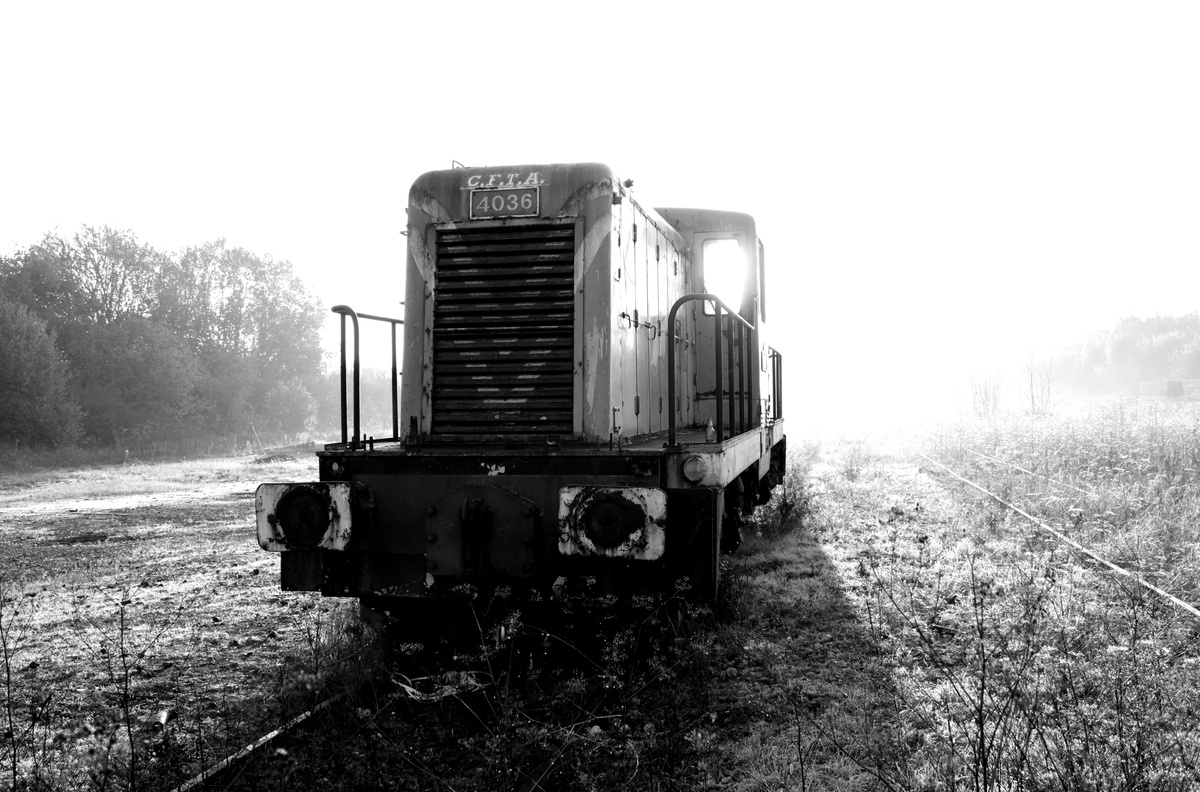
Just
before the cranes came, here in Wassy, on the 29th of october
2014 (Picture:
Guillaume Kieffer)
Bibliography and
external links:
- Vidéo
of the lifting at Wassy Railstation.
(File to
download here)
- Coverage
of
France 3 Alsace about the move
of 2014 (File to download here)
- Press article
of the local newspaper "Dernières Nouvelles d'Alsace" from
the 31th of october 2014
- Voies
Ferrées N°32, 65
- Ferrovissime
N°46
- Rail Passion mai 1998
- The
restoration works are getting ahead: here in mai 2021 there were
important reparations done on the first diesel engine. The first test
is to be seen below!
More
technical information:
ongoing!che
